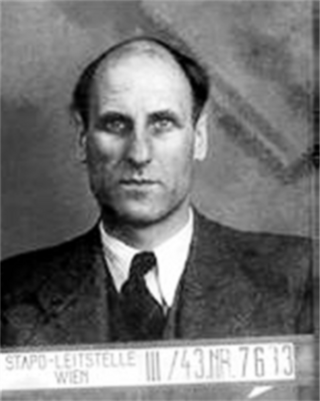DDr. Otto Tiefenbrunner

Personalia
Born:
Died:
Profession:
Persecution:
Imprisoned March 1938 (short time), banned from profession 1938, imprisoned March 8, 1943 - September 1944
Memberships
Curriculum Vitae
The South Tyrolean Otto Tiefenbrunner first attended the Cistercian monastery grammar school in Mehrerau (near Bregenz) and then transferred to the state grammar school in Bolzano, where he graduated in 1922. He then went to Innsbruck to study law and political science. In 1922, he became a member of the student fraternity Austria Innsbruck.
In 1925, he graduated with a doctorate in political science and a year later with a doctorate in law. The next stage of his life was his military service in the Italian army, which he left as a lieutenant. However, Otto Tiefenbrunner decided to return to Austria and was naturalized in the municipality of Zams near Landeck. After a year in court in Landeck and Innsbruck, he found a trainee lawyer position in Bruck an der Mur, where he set up his own practice in 1935.
After the Anschluss, he was briefly arrested here as deputy district leader of the Patriotic Front, banned from practicing law in Styria and expelled from Bruck. He moved to Vienna and opened a law firm, which soon had to be closed again as he had also been banned from practicing in the meantime. He now has to report regularly to the Gestapo and endure various house searches.
He joins the resistance group around lawyer Dr. Karl Wanner, who joins forces with the AFÖ (Antifascist Freedom Movement of Austria) in spring 1942. On March 8, 1943, Otto Tiefenbrunner was arrested in his apartment by the Gestapo on the basis of information provided by the informer "Harry" (Karl Rumersdorfer) and severely ill-treated in order to force a confession in line with the indictment. Despite massive threats, he remains steadfast: "Now your fate is sealed."
"According to the findings of the state police, he endangered the existence and security of the people and the state through his behavior by participating in constant meetings of former members of the Heimwehr, which pursued the purpose of maintaining and strengthening the cohesion among the former members of the Austrian Heimwehr and establishing contact with other former Heimwehr groups, whereby speeches detrimental to the state were made, rumors of the worst kind and news from hostile broadcasters were spread." - according to the protective custody order of May 14, 1943.
On the basis of the arrest warrant issued by the investigating judge of the People's Court at the Vienna Regional Court on September 24, 1943, he was remanded in custody. [Vienna I - prison book no. 1945/43]. In the indictment of June 9, 1944, he is accused of having "prepared the Habsburg-separatist high treason in Vienna from 1941 to the beginning of 1943 by setting up an illegal group affiliated with the 'Anti-Fascist Freedom Movement of Austria (AFÖ)' from spring 1942 and by participating in its meetings and discussions." In the main hearing of the V. Senate of the VGH on August 14/15, 1944, Otto Tiefenbrunner was acquitted: "The defendants ..., Dr. Tiefenbrunner, ... have not been proven by the main hearing to have participated in the above-mentioned treasonous activities, nor do they have credible knowledge of them. ... The defendants ... Dr. Tiefenbrunner ... are acquitted for lack of evidence." The following day he is handed over to the Gestapo and remains in custody until the end of the war. He only escaped the final revenge of his opponents by favorable coincidence.
Places
Residence:
Citations
- Fritz, Herbert/Krause, Peter (2013): Farbe tragen, Farbe bekennen 1938–45. Katholische Korporierte in Widerstand und Verfolgung. (ÖVfStG, 2013), p. 553/554.
Photo: ÖVfStg
